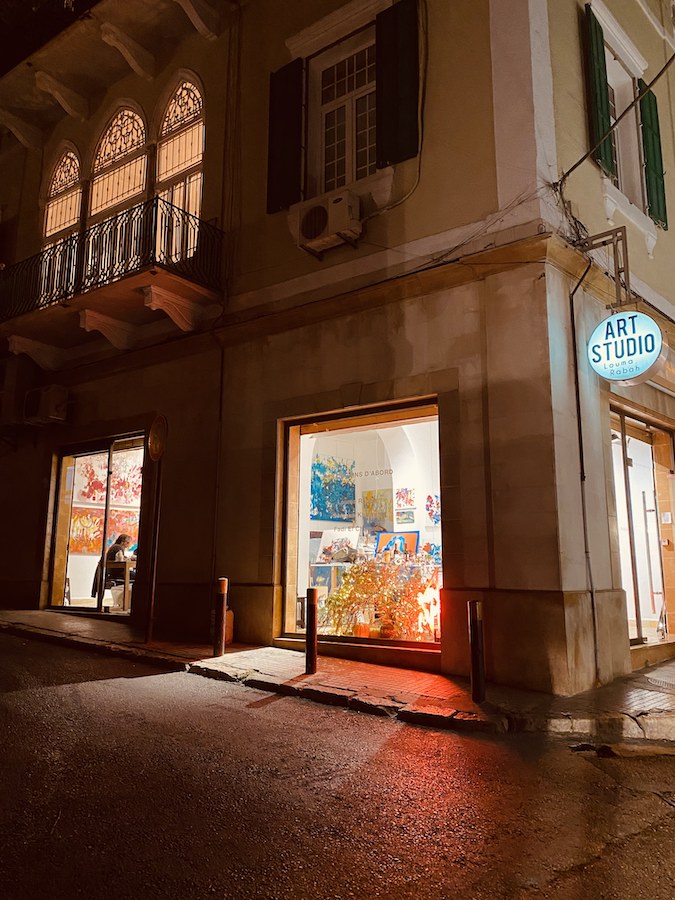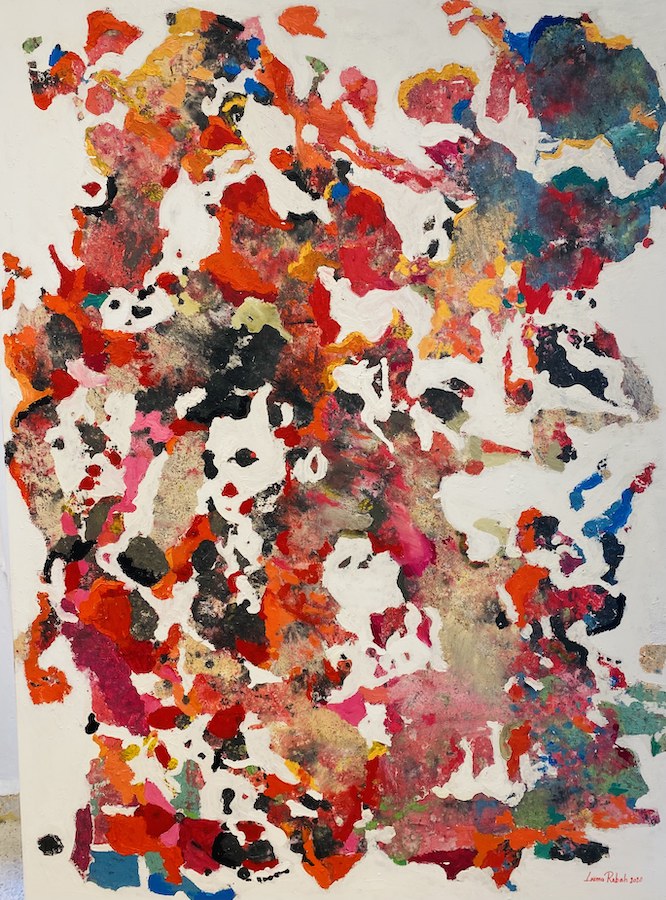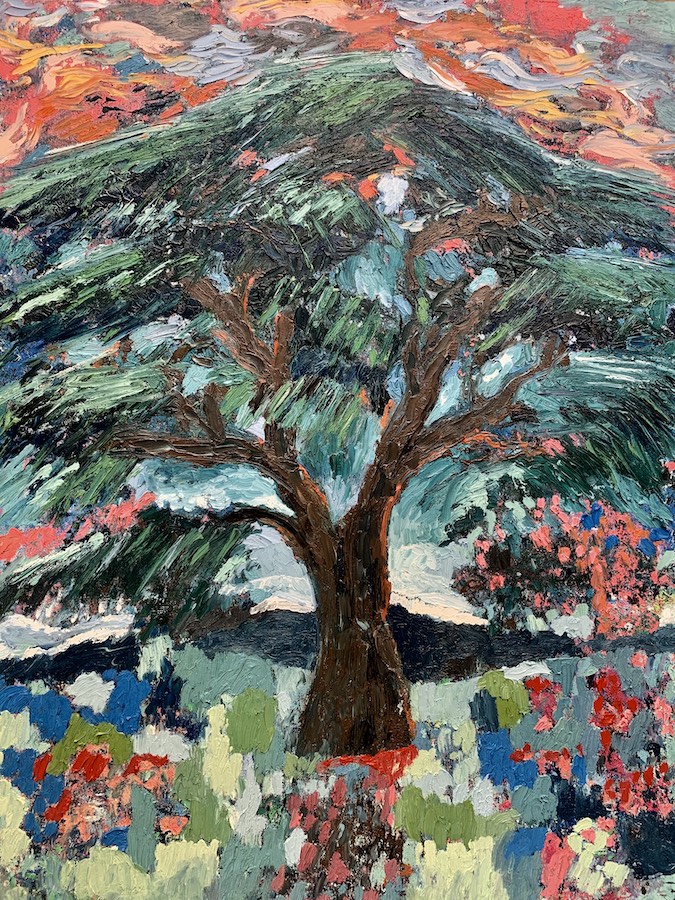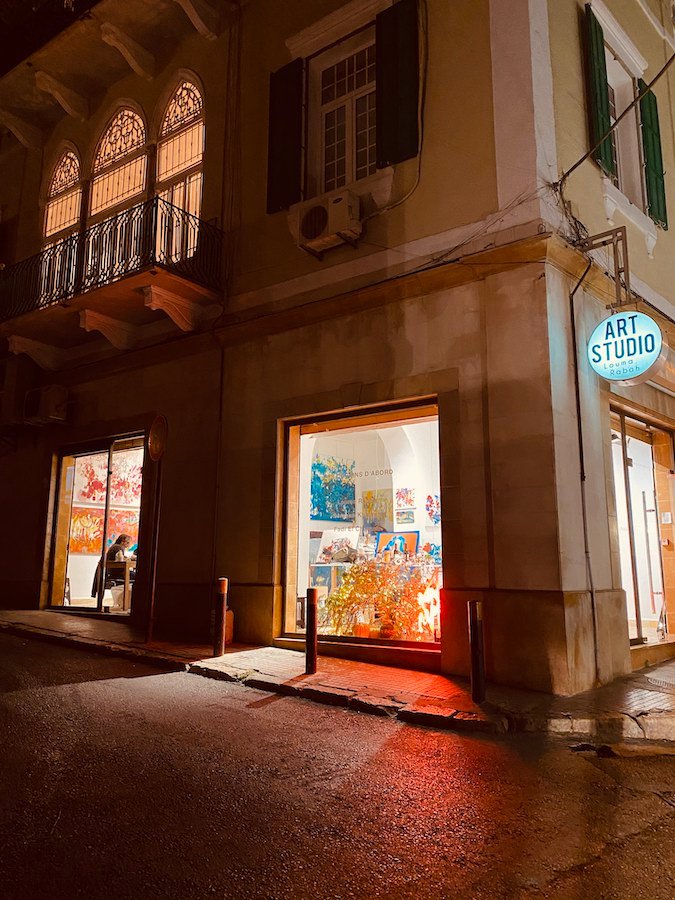LONDON: “The colors in my paintings come from my childhood memories. My dad used to work in agriculture, so it was always about nature, flowers and trees,” Lebanese artist Louma Rabah tells Arab News. “My happiness is in nature — even a gloomy tree can make me happy.”
Rabah’s parents divorced when she was just 18 months old and she went to live with her father, her half-Austrian stepmother (“who I regard as my second mum”), and her siblings. They fled Lebanon in 1985 because of the civil war and went to live in Vienna, then Egypt, before returning to Lebanon in 1990.
“I met up with my mother again in Italy when I was 15,” Rabah says. “She was living with her artist husband. She is also a painter, gifted at watercolors. Today she lives in Lebanon and we are close.”

Even though her mother was an artist, Rabah’s decision to become a professional painter at the age of 30 required a leap of faith, giving up her job as a graphic designer and animator for Alsumaria TV. Many of her family and friends advised her not to — particularly as she had a young son to take care of, having recently divorced. “I really didn’t have enough money to do this, but it felt good to me,” she says. “The people around me were more scared than I was.”
Ten years on, she not only makes a living from her art, but — more importantly — has the freedom to create on her own terms.
On the morning of the August 4 Beirut Port explosion, Rabah was happily absorbed in painting when she suddenly felt compelled to get out of Beirut. Her son accused her of being hysterical, but she was adamant. On checking into their hotel, they heard the news about the blast. Her house and studio had been extensively damaged. “The chair where my son likes to sit was right in front of a double-glazed window which was blown out.”
Rabah set about repairing her home and studio as quickly as possible. “It was very difficult to paint — it didn’t seem important,” she says. “But I realized I mustn’t give up, so I fixed my studio really fast and invited people to paint, read poetry and express their feelings. People thanked us for that: ‘You are bringing a bit of hope to the neighborhood.’ Beirut is a very cultured city. If this dies, the heart of Beirut dies.”
Here, Rabah talks us through some of her favorite work.
‘Surviving the 4th of August’

This is the painting I was working on the morning of the port explosion. It was still wet when my home was damaged, and the shards of broken glass dried on the canvas. Volunteers came and tried to brush off the glass, leaving footprints. But the couple that bought it said they wanted it left as it was. So I left the glass embedded in it and we wrote on the back that it had survived the August 4 blast.
‘Escape in Nature’

This depicts the nature in the mountains where my mother lives. She has a beautiful garden connected to the valley where you can walk into endless wild flowers. When I take a photo, people think I’ve edited it; the colors are so vibrant. I painted this after the blast. You can feel the strokes are strong. When I did it I was angry — but I put it into something I liked, so I calmed myself. When I’m feeling angry or negative, I don’t paint the negativity — I don’t like to put my sadness or dark periods on the canvas because I think if I have the chance to make something prettier or happier, why not? After I paint something positive, my mood changes. It’s like therapy. A lot of artists painted the destruction after the blast, but it wasn’t something I wanted to put on canvas or even to see ever again. It doesn’t help me in any way.
‘Blooming Cactus’

I painted this when I was still married. I wasn’t a painter then — I was just painting at home. But I enjoyed doing this. I like the cactus; it’s a very resilient plant, very strong. Whatever the conditions, it still grows. Visually it’s very nice too — they look like little sculptures. You can see that, over time, my art has changed. Some of my early work was very orderly and constrained, but my new paintings are more free and abstract.
‘Field of Wild Flowers’

When you start making abstract art, it means you’re becoming more confident. With time you can — like a good writer — say less and project more. You get to convey what you’re feeling without having to paint every detail. Sometimes, I still go into nature and paint what I’m seeing, but most of the time it’s a feeling I want to put on canvas. I don’t think before I paint. I know what colors I’m feeling and what mood I’m in, but the outcome is a total surprise. I like to be free to paint whatever I wish. An artist shouldn’t worry about what people will like or not. They should be honest. People who paint are very lucky because we are free. We are doing what makes us happy and relaxed.
‘Cedar Tree in Spring’

In Lebanon we have beautiful nature and trees. It’s what makes us special in the Arab world. During this interview, I’m speaking to you from Dubai. I came here to stay with my sister, whose boyfriend was killed in the port blast. After this tragedy she decided to move to the UAE, where she has friends. On my first day in Dubai, I opened the window and there were New Year fireworks and people were clapping and laughing on the seafront. It made me cry because of the contrast between what Lebanon is facing now. But I’m looking forward to going home. I miss everything — my neighbors, the street, my studio.


